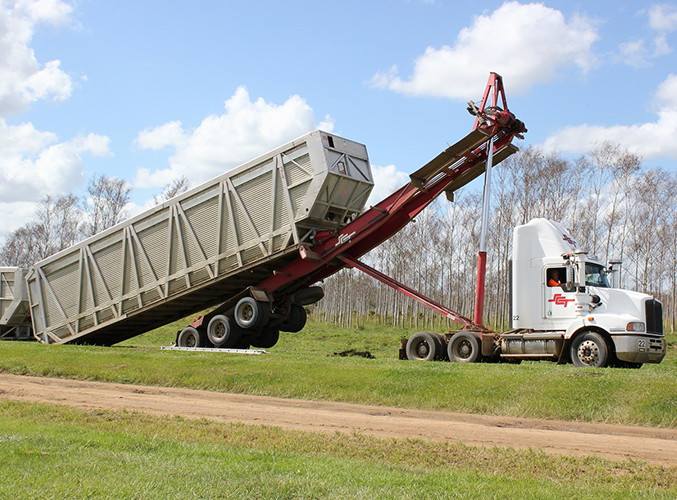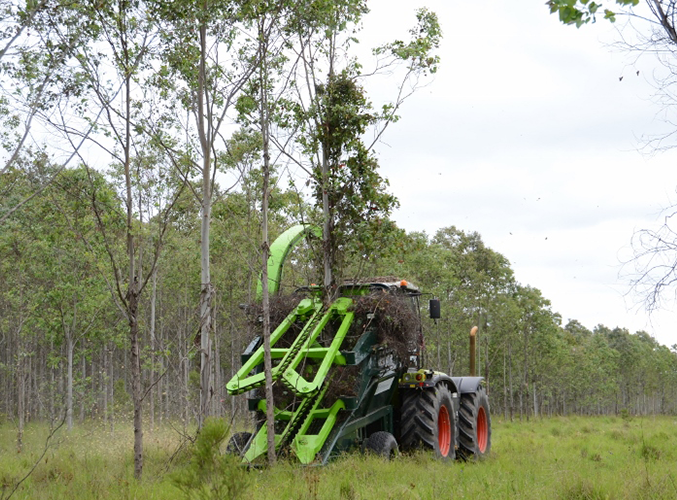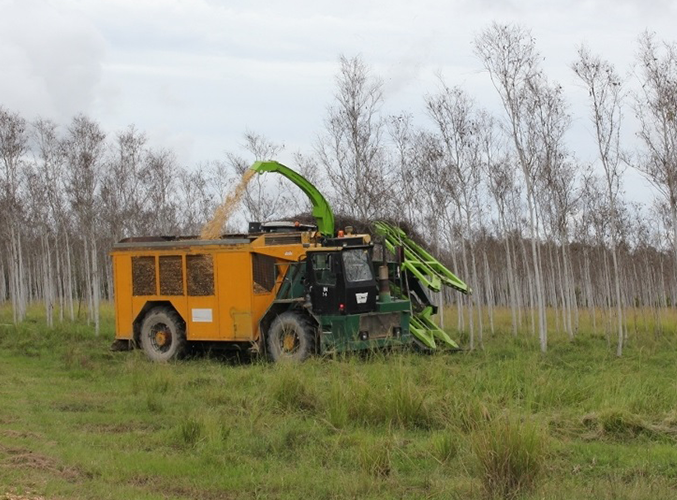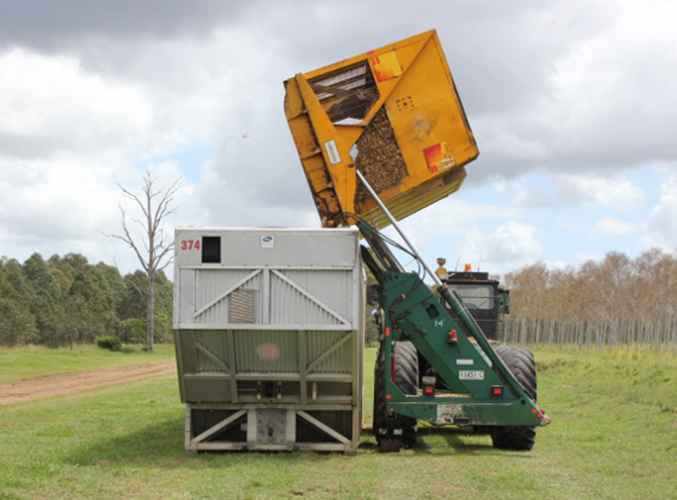Summary
This project involves the design, construction and testing of an innovative woody biomass harvester
Need
There are several ‘short-rotation’ trees species, such as the Mallee, that can be repeatedly harvested in 3-5 years cycles. Mallee trees have adapted to low rainfall, high evaporation environments with periodic wildfires, making them a suitable source for renewable biomass.
Harvesting of short-rotation woody crops is recognised as the highest contributor to the overall supply chain cost of delivered biomass feedstock. A lower cost, more efficient harvesting technology could contribute to a start-up biomass industry in Australia. There is also a knowledge gap in harvesting and supply chain costs.
Project innovation
Biosystems Engineering has applied innovative thinking to traditional forestry technology to develop the world’s first vertically fed, continuous wood chipper harvester. The novel design maximises the operational and fuel efficiency of the wood chipper and integrates it with a vehicle.
The harvester simultaneously chops trees and converts them to woodchips in a single pass with no need for separate chipping and transport steps. It is designed to integrate with in-field haulout vehicles and roadside collection and transport, similar to the current supply chain model for sugar cane harvesting.
Learn more
Benefit
Mallee biomass can potentially be a reliable long-term source of renewable energy from biomass feedstock. The technology being trialed by this project aims to address harvesting cost barriers and enable a commercially viable supply chain to be developed in Australia.
It may facilitate the integration of native species back into the Australian agricultural landscape as a commercially viable crop with ecological and commercial benefits for regional Australia.







